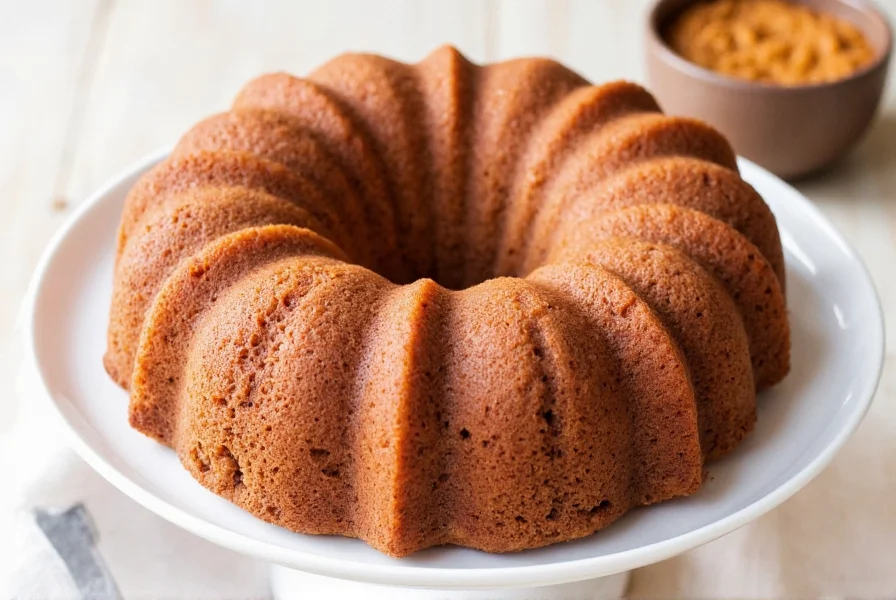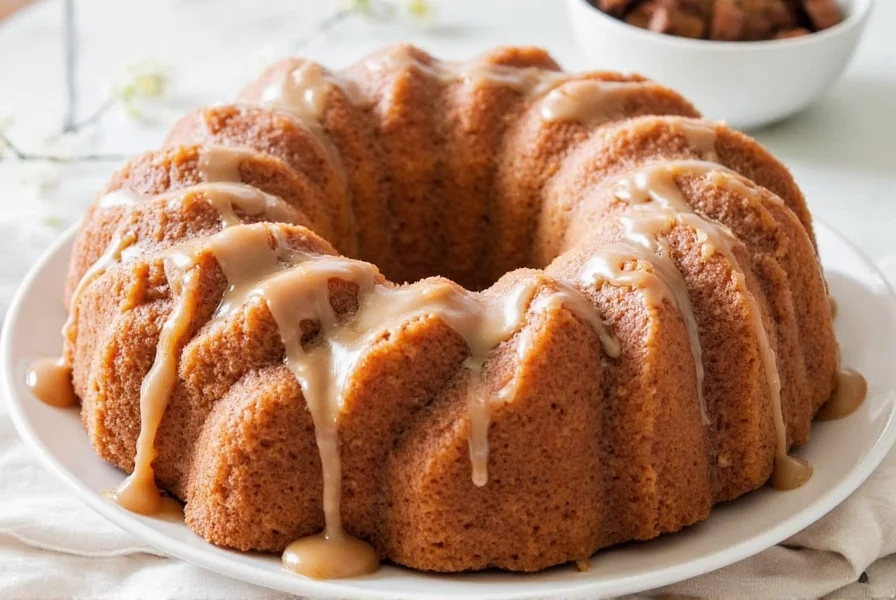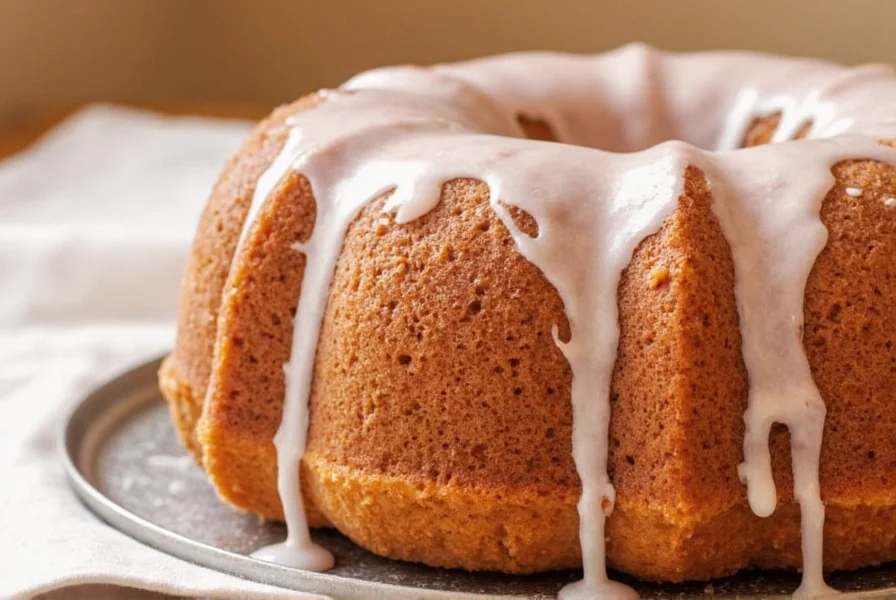Creating the ultimate cinnamon bundt cake requires understanding both the science of baking and the art of flavor balance. Unlike standard layer cakes, bundt cakes demand special attention to pan preparation and batter consistency to achieve that signature moist interior with a delicate crust. The best cinnamon bundt cake recipe combines quality ingredients with precise technique to deliver consistent results every time you bake.
Essential Ingredients for Flavorful Cinnamon Bundt Cake
Quality ingredients form the foundation of any exceptional cinnamon bundt cake. For the best results, use real butter rather than margarine, as its higher fat content creates superior texture. Freshly ground cinnamon provides more vibrant flavor than pre-ground spice—toast whole cinnamon sticks in a dry skillet for 1-2 minutes before grinding. Buttermilk's acidity reacts with baking soda to create lift while tenderizing the crumb. When measuring flour, spoon it into your measuring cup and level off—don't scoop directly from the bag, which compacts the flour and leads to dry cake.

Step-by-Step Baking Instructions
Follow these detailed steps for cinnamon bundt cake success. First, prepare your bundt pan thoroughly: brush melted butter into every crevice, then dust generously with a cinnamon-sugar mixture (1/2 cup sugar + 2 tablespoons cinnamon). This creates a flavorful crust and ensures easy release. Cream butter and sugar for 3-4 minutes until light and fluffy—this incorporates air for proper rise. Alternate adding dry ingredients and buttermilk in three additions, beginning and ending with dry ingredients. Mix just until combined after each addition; overmixing develops gluten and creates toughness.
Pour the batter into your prepared pan, smoothing the top gently with an offset spatula. Bake at 325°F (not 350°F) for 55-65 minutes. The lower temperature prevents the exterior from over-browning before the center cooks through. Test for doneness when a toothpick inserted near the center comes out with moist crumbs, not wet batter. Cool in the pan for exactly 10 minutes—any less and the cake may break; any longer and steam will make the bottom soggy.
Perfect Pan Preparation Technique
Proper bundt pan preparation separates successful cakes from kitchen disasters. Many home bakers make the mistake of using only nonstick spray, which often fails in intricate designs. Instead, use the butter-and-cinnamon-sugar method described earlier. For extra security with detailed pans, consider a flour-based alternative: after buttering, dust with flour mixed with 1 tablespoon of cinnamon. Tap out excess thoroughly. Never use cooking spray with flour additives—they create a gummy residue that's difficult to remove and affects future baking.
| Common Bundt Cake Issues | Causes | Solutions |
|---|---|---|
| Cake sticks to pan | Insufficient pan prep, cooling too long | Use butter+cinnamon sugar, cool 10 minutes exactly |
| Dry or crumbly texture | Overbaking, too much flour, high oven temp | Bake at 325°F, measure flour properly, check early |
| Uneven baking | Oven hot spots, improper rack position | Rotate pan halfway, center rack position |
| Collapsed center | Underbaking, too much leavening | Test thoroughly, measure baking powder accurately |
Flavor Variations and Customizations
While the classic cinnamon bundt cake delights with its simplicity, several variations can elevate your baking. Add 1/2 cup toasted pecans or walnuts for texture contrast. For a cinnamon bundt cake with streusel topping, layer 1/3 of the batter in the pan, sprinkle with 1/2 cup cinnamon-nut mixture, repeat layers, then finish with remaining batter. Incorporate 2 tablespoons of espresso powder into the dry ingredients to deepen the cinnamon flavor without adding coffee taste. For special occasions, add a cinnamon-apple compote layer by placing 1 cup of sautéed apples in the bottom of the prepared pan before adding batter.
Glazing and Serving Recommendations
The perfect glaze enhances rather than overwhelms your cinnamon bundt cake. A simple powdered sugar glaze (1 cup powdered sugar + 2-3 tablespoons milk + 1/2 teaspoon vanilla) provides subtle sweetness. For more complexity, try a brown butter glaze: cook 4 tablespoons butter until nutty brown, cool slightly, then whisk into powdered sugar with 2 tablespoons cream. Drizzle over completely cooled cake. Serve slices with lightly sweetened whipped cream or vanilla ice cream. For brunch gatherings, pair with strong coffee or chai tea to complement the warm spices.
Storage and Freezing Guidelines
Proper storage maintains your cinnamon bundt cake's quality. Store unglazed cake at room temperature in an airtight container for 3-4 days. Glazed cakes keep best when covered loosely with plastic wrap. For longer storage, freeze unglazed cake slices individually wrapped in plastic, then placed in a freezer bag for up to 3 months. Thaw at room temperature before glazing. Never refrigerate plain bundt cake—the cold temperature accelerates staling. If your cake becomes slightly dry, revive it by wrapping individual slices in damp paper towels and microwaving for 10-15 seconds.

Frequently Asked Questions
How do I prevent my cinnamon bundt cake from sticking to the pan?
Thorough pan preparation is crucial. Use melted butter (not spray) to coat every crevice, then dust generously with a cinnamon-sugar mixture (1/2 cup sugar + 2 tablespoons cinnamon). For intricate pans, consider adding 1 tablespoon of flour to the cinnamon-sugar. Cool the cake in the pan for exactly 10 minutes before inverting onto a cooling rack—any longer and steam will make the bottom soggy.
Why does my cinnamon bundt cake come out dry?
Dry cinnamon bundt cake typically results from overbaking, incorrect flour measurement, or too high oven temperature. Measure flour by spooning into your measuring cup and leveling off—don't scoop directly from the bag. Bake at 325°F (not 350°F) for 55-65 minutes, checking for doneness when a toothpick shows moist crumbs. Buttermilk in the recipe helps maintain moisture, so don't substitute with regular milk.
Can I make cinnamon bundt cake ahead of time?
Yes, cinnamon bundt cake actually improves in flavor when made 1-2 days ahead. Store unglazed cake at room temperature in an airtight container. Glaze just before serving for best appearance. For longer storage, freeze unglazed cake slices individually wrapped in plastic, then placed in a freezer bag for up to 3 months. Thaw at room temperature before glazing and serving.
What's the difference between cinnamon bundt cake and coffee cake?
While both feature cinnamon, traditional coffee cake typically contains a streusel swirl throughout the batter and is often baked in a flat pan. Cinnamon bundt cake has a smooth batter poured into a decorative ring-shaped pan, with cinnamon flavor distributed evenly. Bundt cakes rely on the pan's design for visual appeal, while coffee cakes showcase their swirl pattern. Bundt cakes generally have a finer, more uniform crumb structure compared to the denser texture of many coffee cakes.
How can I enhance the cinnamon flavor in my bundt cake?
For more pronounced cinnamon flavor, toast whole cinnamon sticks in a dry skillet for 1-2 minutes before grinding them fresh. Use both cinnamon in the batter and in the pan preparation for layered flavor. Adding 1/4 teaspoon of cardamom or allspice complements cinnamon beautifully. For depth, incorporate 2 tablespoons of espresso powder into the dry ingredients—it enhances spice notes without adding coffee flavor. Using dark brown sugar instead of light also deepens the cinnamon profile.











 浙公网安备
33010002000092号
浙公网安备
33010002000092号 浙B2-20120091-4
浙B2-20120091-4